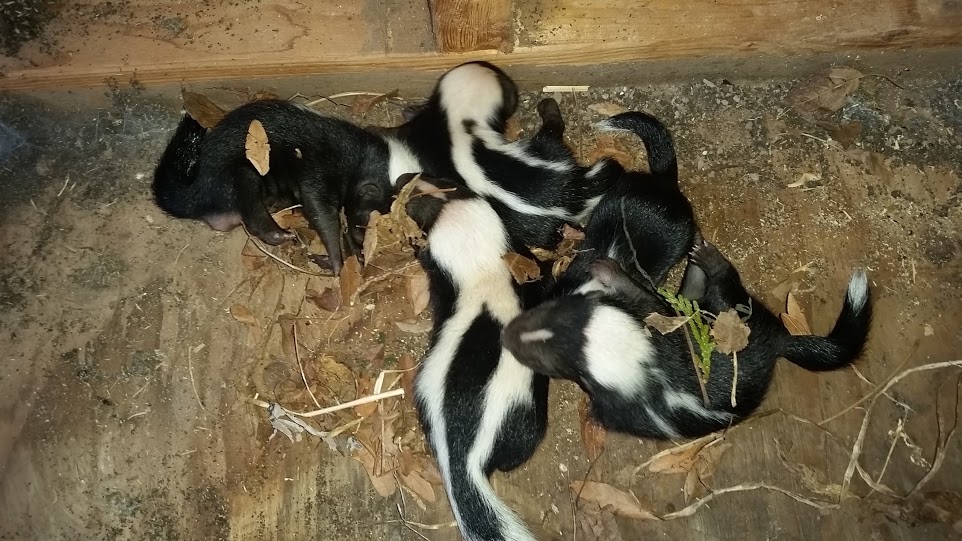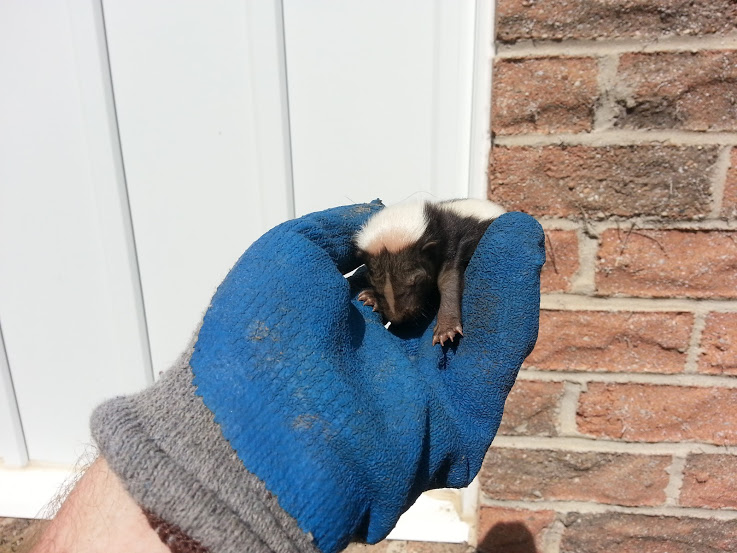Aside from endearing cartoon characters, skunks are generally avoided by most people (and animals) whenever possible. Even if you are lucky enough to have never been sprayed, the smell of a skunk from a distance is enough to convince you to leave these striped critters alone. Have you ever wondered whether this applies to baby and adolescent skunks, too? The newborn versions of almost any mammal are exceptionally cute, but young skunks may have a few behavioural habits that the public should be aware of. Consider several key questions that may uncover the truth about juvenile skunks so you’re prepared to respond in the best way possible should you ever come across any of these little critters.
What Are Skunks Like in Early Life?
When skunks are first born, they lack the critical senses of sight and hearing. On top of that, they have very little fur, though there is still a discernable stripe along their back. Weighing in at just one ounce, newborn skunks are quite helpless. Though they double in weight after a week and open their eyes after three weeks, these critters are almost completely dependent on their mother in early life.
Skunks are normally born and raised in dens. A mother may be caring for anywhere from five to 10 kits at a time. Their homes may be self-dug, or they could be recycled versions of other animals’ abandoned dens. Because skunks often start life in May or June, they are frequently ready to begin leaving the den on short trips with their mother in July. By August, these critters are normally fully weaned.
Surprisingly, adolescents do not become independent until the following spring. Instead, they spend the winter in a den with their mother. Though skunks do not hibernate, they have been known to sleep away much of the winter when it is especially cold. Their main food sources include dead animals, insects, eggs, grain, and fruit.

When Can They Start Spraying?
Skunks are said to be able to spray when they are just over a week old. Even so, this ability is of little use until juveniles are fully mobile. Further, skunks’ musk glands don’t finish developing until about three months of life. As these critters mature, they get increasingly better at aiming their spray to target predators.
Are They Dangerous?
Though adolescent skunks do have spraying capabilities, they are not generally considered to be dangerous. Even so, you don’t want to test them. Young skunks can have a temper and learn to stamp their feet and prepare to spray at a young age. Once they are one month old, these critters can defend themselves quite effectively. Bear in mind that it is never wise to handle skunks as they can transmit diseases such as rabies and roundworm, and their mother is usually closeby ready to defend her young.
Do Adolescents Look Different Than Adults?
By the fall, juvenile skunks start to look much like adults. With thick fur and a prominent white stripe on their back, it can be hard to differentiate between the two. The tell-tale sign is simply their size. If you spot a particularly small skunk, it is likely still in its adolescence.
What Should You Do If Skunks Are Living Below Your Home?
Because skunks like to live in dark, well-protected areas, spaces underneath your home may make an ideal den. If you have a crawlspace or deck, for instance, skunks may nestle into one of these areas for a season. While skunks may be cute and generally keep to themselves, it is often best for homeowners to call in professional help when they notice a den within their home. This way, specialists can carry out humane skunk removal, ensuring that neither the animals nor your family members are harmed.
When you need wildlife control services on your property, give your local Skedaddle Humane Wildlife Control a call.



